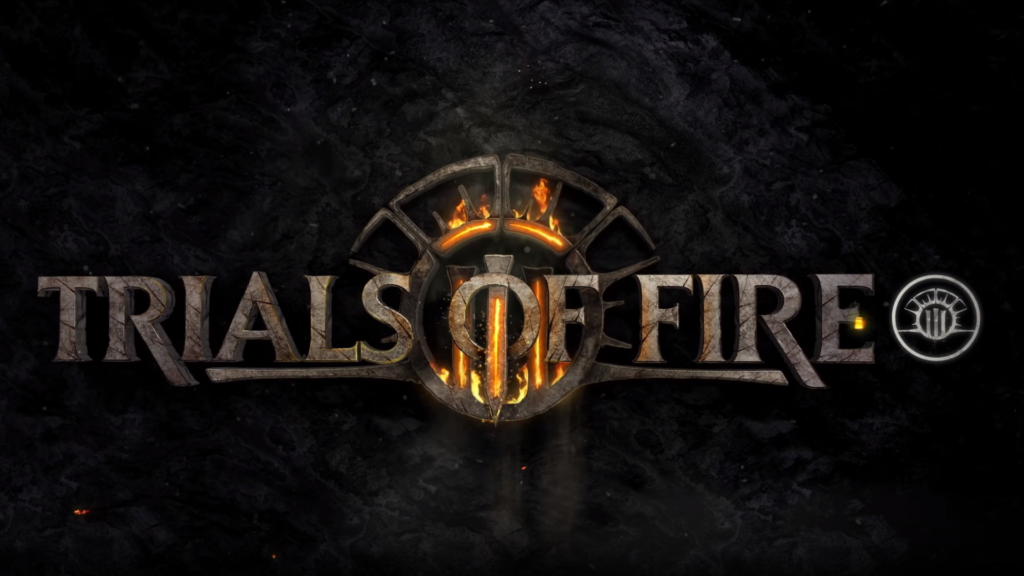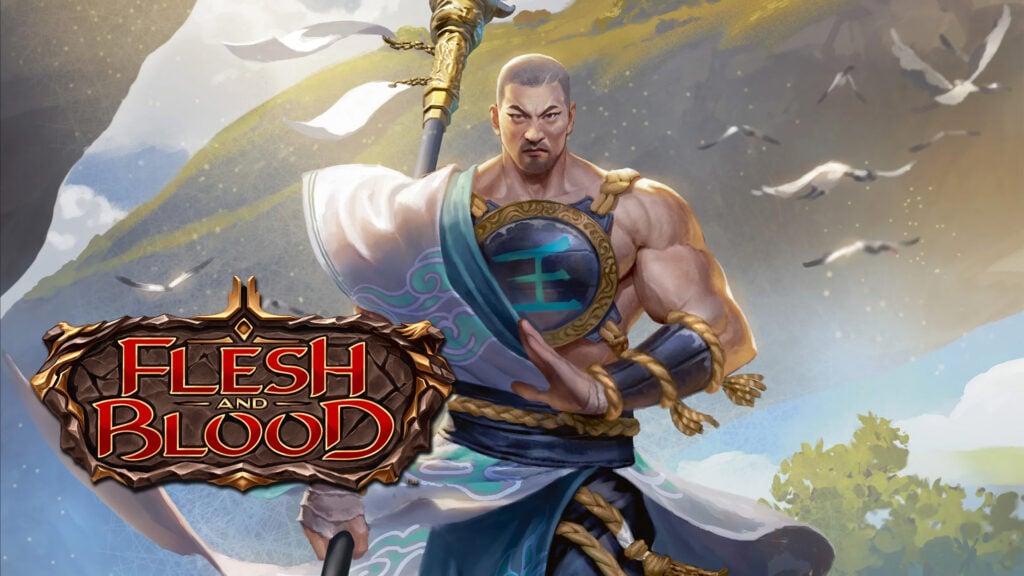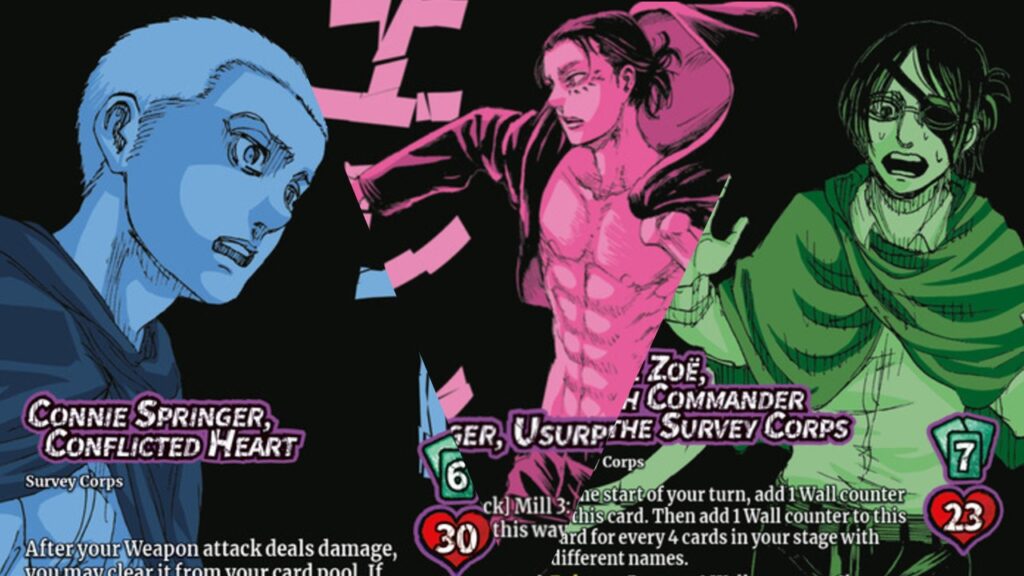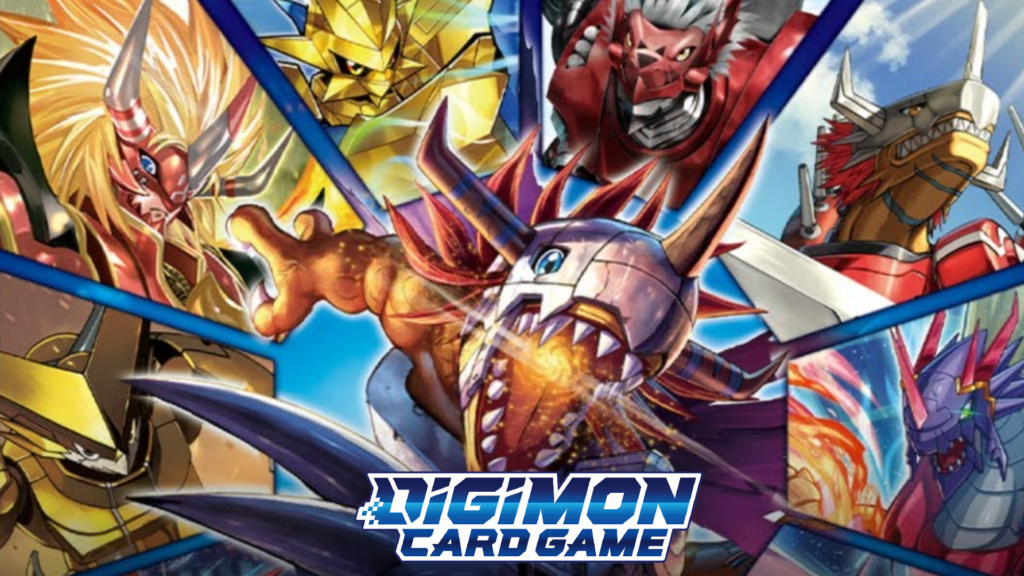Images courtesy of Whatboy Games
My party’s morale has shattered. My deck is clogged with useless cards. I have a surplus of food for my party. I have hoarded too many resources and didn’t use them to improve my gear. I’m on a side mission to rescue a villager from a Ratling. To the dismay of my units and my sleep schedule, I queue up for a miniboss battle which wipes my party. Lesson learned. I will definitely commit the same mistakes again during the next run. This is Trials of Fire.
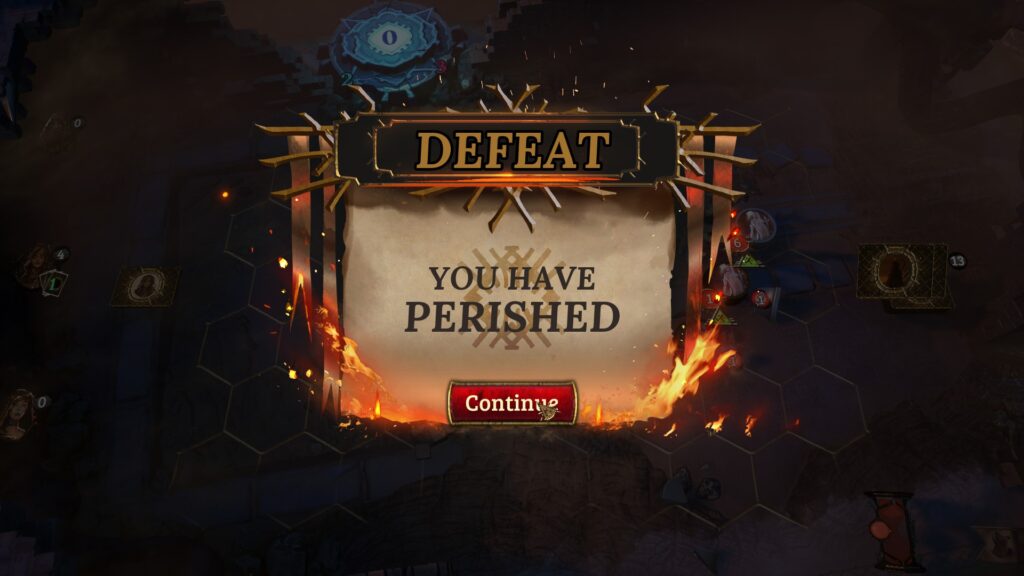
Part-roguelike deckbuilder, part-adventure game, and part-tactical RPG, Trials of Fire from Whatboy Games marries various genres into an amalgamation that shouldn’t technically work on paper, or at least, should be hard to get right. Despite the challenge, this visionary game provides an enjoyable hex-based RPG gameplay ala the Fire Emblem series, while boasting a robust combat phase through a card-based action system.
If this sounds a tad bit confusing, let’s go over the game’s mechanics.
Table of Contents
ToggleTrials of Fire Mechanics
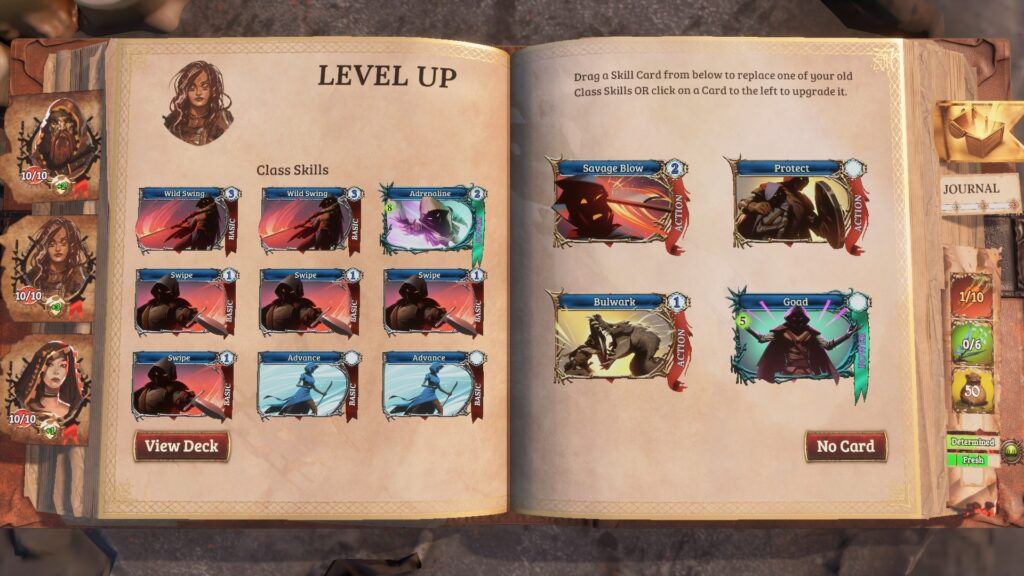
At the start of each run, which lasts for around 90-120 minutes, we begin with three characters from archetypal classes (warriors, spellcasters, rangers, assassins, and more), each with their own specialized decks. But unlike its other deckbuilder counterparts, such as Cobalt Core, these three decks aren’t shuffled together; we’re building three different decks at the same time!
The combat is carried out on a hex-based grid, where cards dealt from the deck correspond to specific actions, such as movement, melee or ranged attacks, or powerups. This is where the meat of the game comes from, as it’s extremely combo-centric, where lining up plays from our three characters compound into something bigger than the sum of its parts.
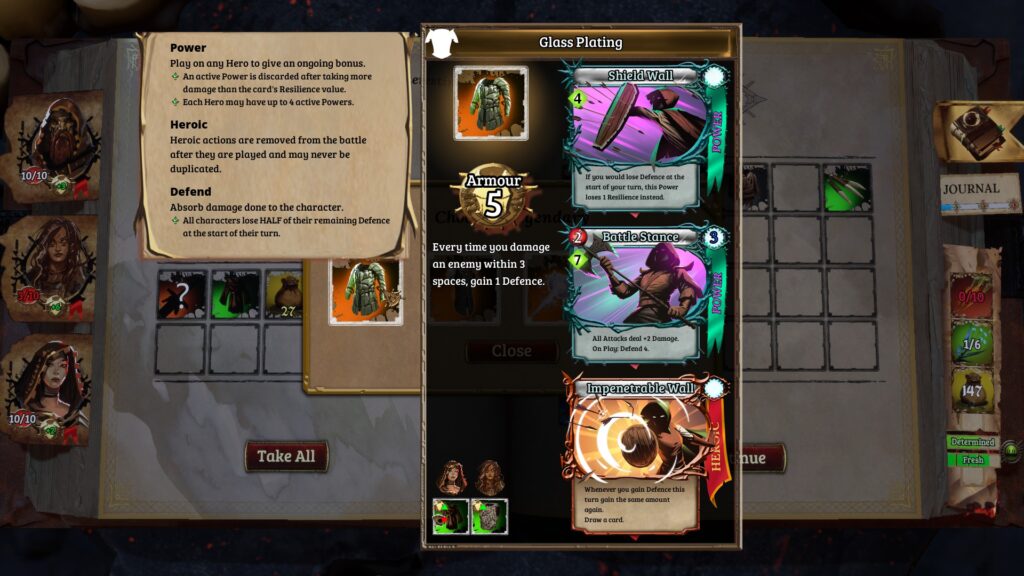
Trials of Fire still has more tricks up its sleeve. Though we do add or remove cards to and from our deck through leveling up and resting at certain points in the map, the game also has an equipment system, where putting on gear adds cards to our deck! This isn’t a system seen in others in the genre, though we can also argue not a lot of games combine all of these elements.
Trials of Fire as an Adventure RPG
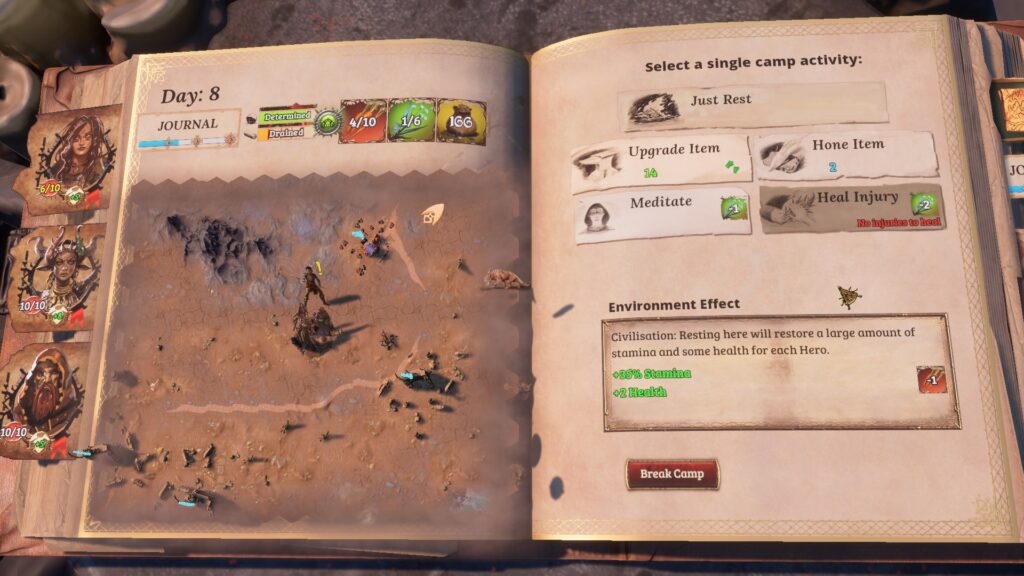
The game’s several campaigns are laid out in a 2D storybook world, where we can walk around the map to visit certain nodes which can contain Materials, Food, Events, and Battles. These probabilities are disclosed ahead of time, so in true roguelike fashion, we have to pick and choose our fights carefully. While helping out a villager in need seems altruistic, our squad might be too exhausted to fight against a vigilante leader. But other times, the risk is worth the reward; if the NPC promises us an Epic Reward upon victory, who are we to refuse?!
Speaking of the loot – it is an RPG, after all – epic and legendary-tier items are some of the best highs the game provides, boasting great stat boosts (more health and armor), plus myriad powerful cards in our decks.
Another aspect of the game is morale and stamina. Exploring the world expends our morale and stamina, and we need to take rests to rejuvenate. Otherwise, our decks get clogged with debuff cards.
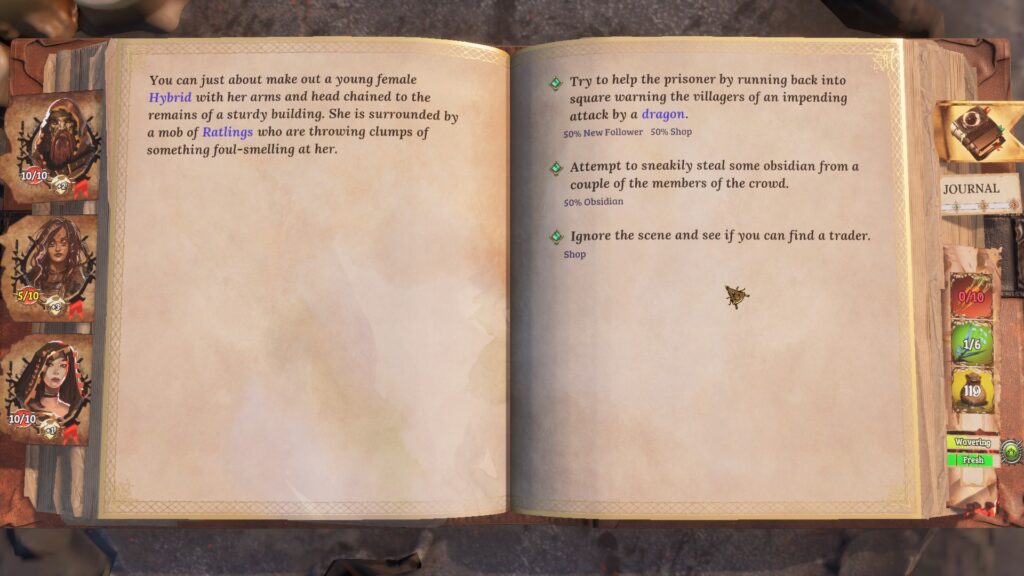
The storybook overworld is more of a mechanical tool than a storytelling one. While prompts and some bits of lore are spread out throughout each run, they serve more of a functional purpose to propel the game forward. And that’s fine; Trials of Fire appeals to a certain type of audience who wants to see how these genres can be pushed conceptually.
Combat in Trials of Fire
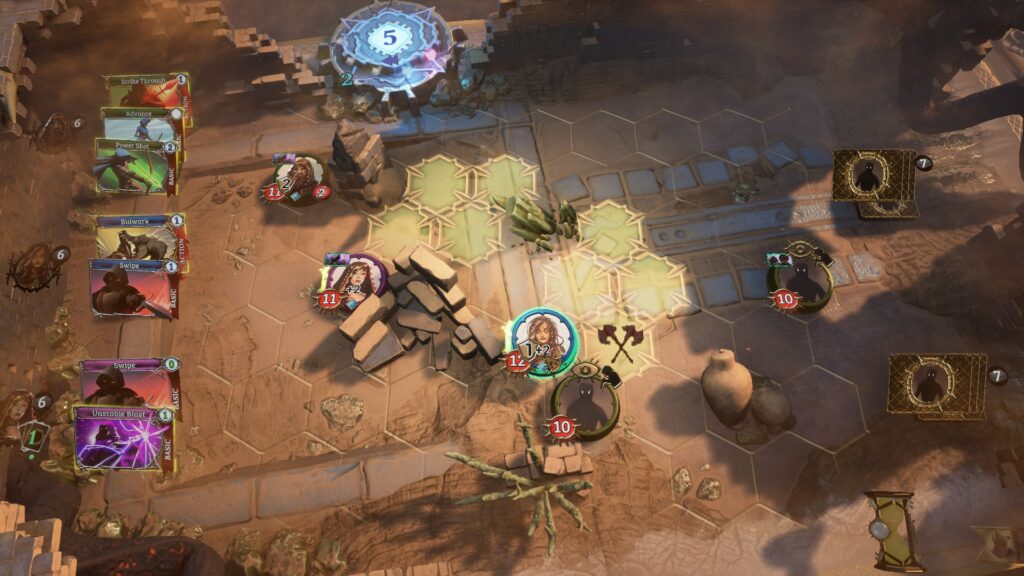
Willpower is Trials of Fire‘s mana equivalent. By right-clicking the cards in our hand, we can convert them to Willpower so we can play other cards. This means there aren’t outright mana cards in the game; any card can be pitched for Willpower, a la Flesh and Blood’s resource system.
Pitching cards to Willpower provides two options: to use these as mana to pay for cards for any character, or to move the respective character two spaces on the board. While there are specific movement cards, sometimes we just need one more hex to reach the weakened enemy mob for a devastating melee blow.
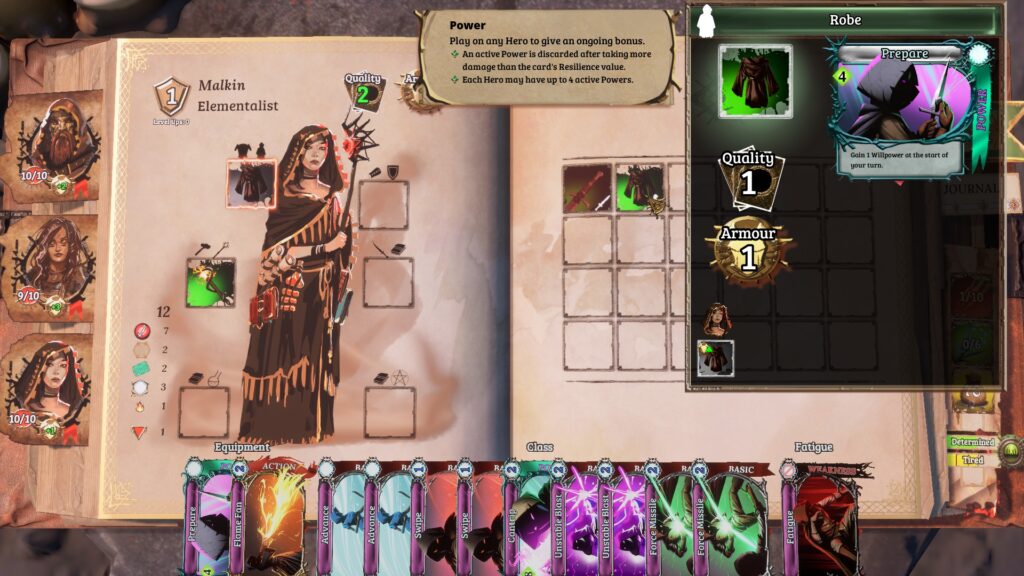
Certain cards provide Powers to our units and usually don’t give immediate benefits. And so, the game flows into an elegant back and forth of moving into position for an alpha strike, or hiding behind obstacles to protect ourselves from incoming projectiles so we can ramp up with passive skills.
If our hand is just absolutely unplayable, we can also redraw our hand (with certain limitations), at the cost of Willpower, ensuring we can have a playable hand in a pinch.
The usual RPG mobs are here: melee attackers, ranged snipers, summoners (whose summons die when we kill the master), and tougher elite bosses with different behaviors than weaker ones.
The Card Gamer Verdict on Trials of Fire
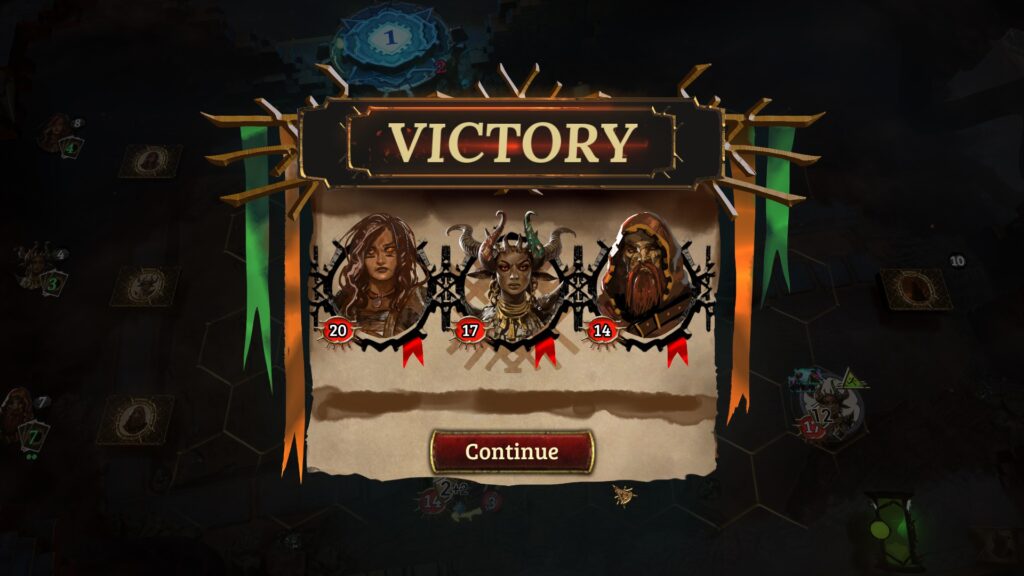
A genre-pushing game, Trials of Fire sets out to combine various game elements into one cohesive package. This isn’t even mentioning all the other modes the game offers, such as other campaigns and challenges.
As stated earlier, while Trials of Fire isn’t a game for everyone, it appeals to a specific type of gamer who want to see how all these mechanics interplay into a game that’s frustrating but rewarding to play. After all, that’s how roguelikes work – we mess up until we figure out the gimmicks, then onto the next roadblock! Until then, I’ll be treading the fine line between my party’s morale and exhaustion, but then jump headfirst into another altruistic adventure which ends my run.
Trials of Fire is available now on Steam.
For more deckbuilder articles, check out my review of Tuggowar, which recently released on Steam. If you want a cozy game on-the-go, check out Game Freak‘s Pocket Card Jockey: Ride On!

